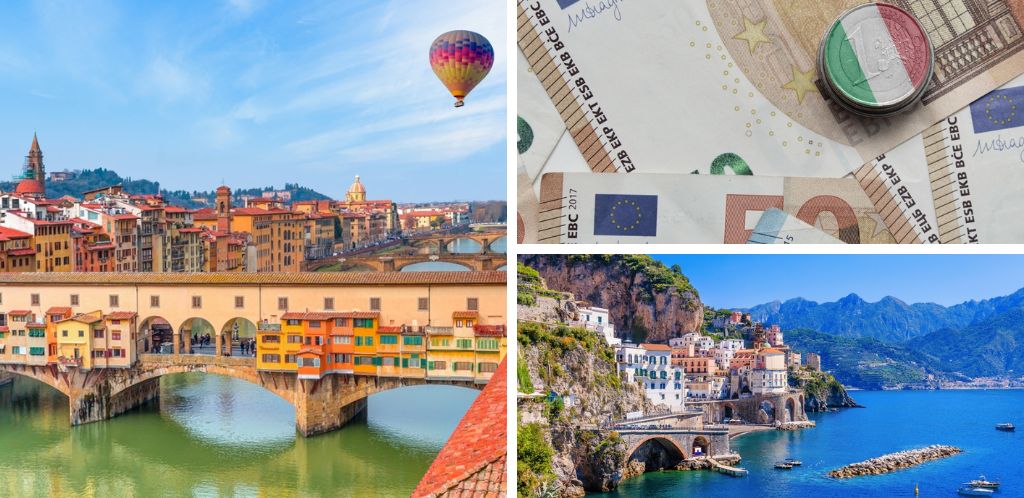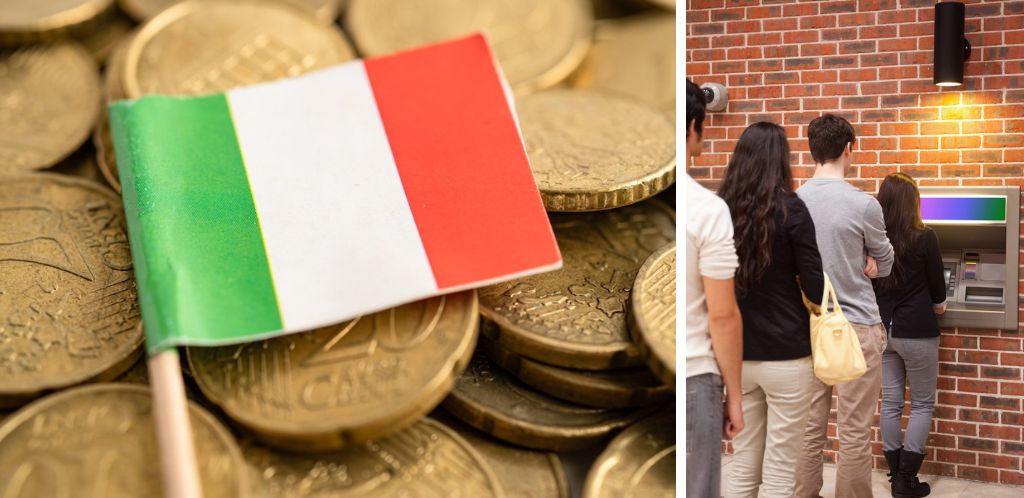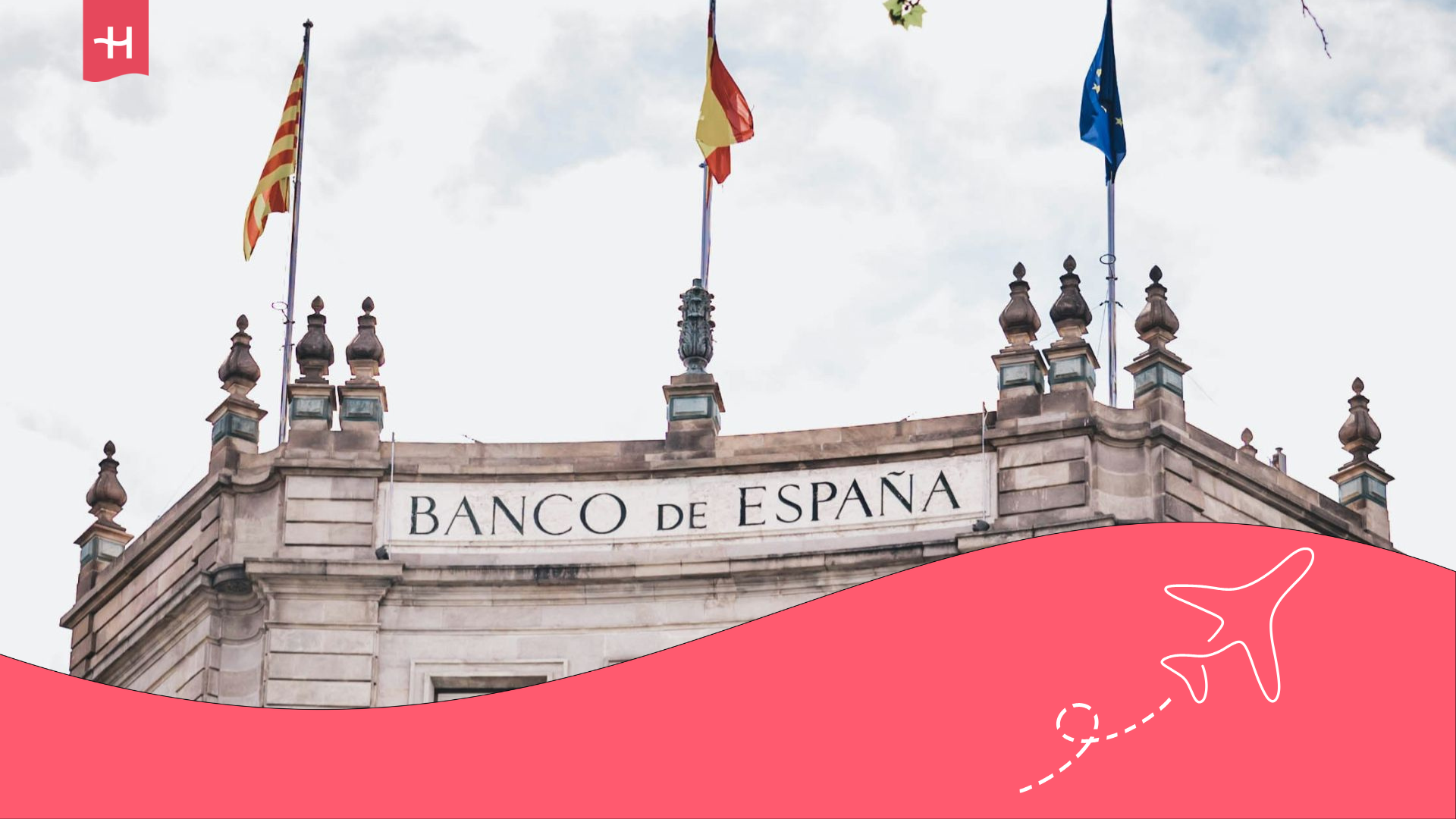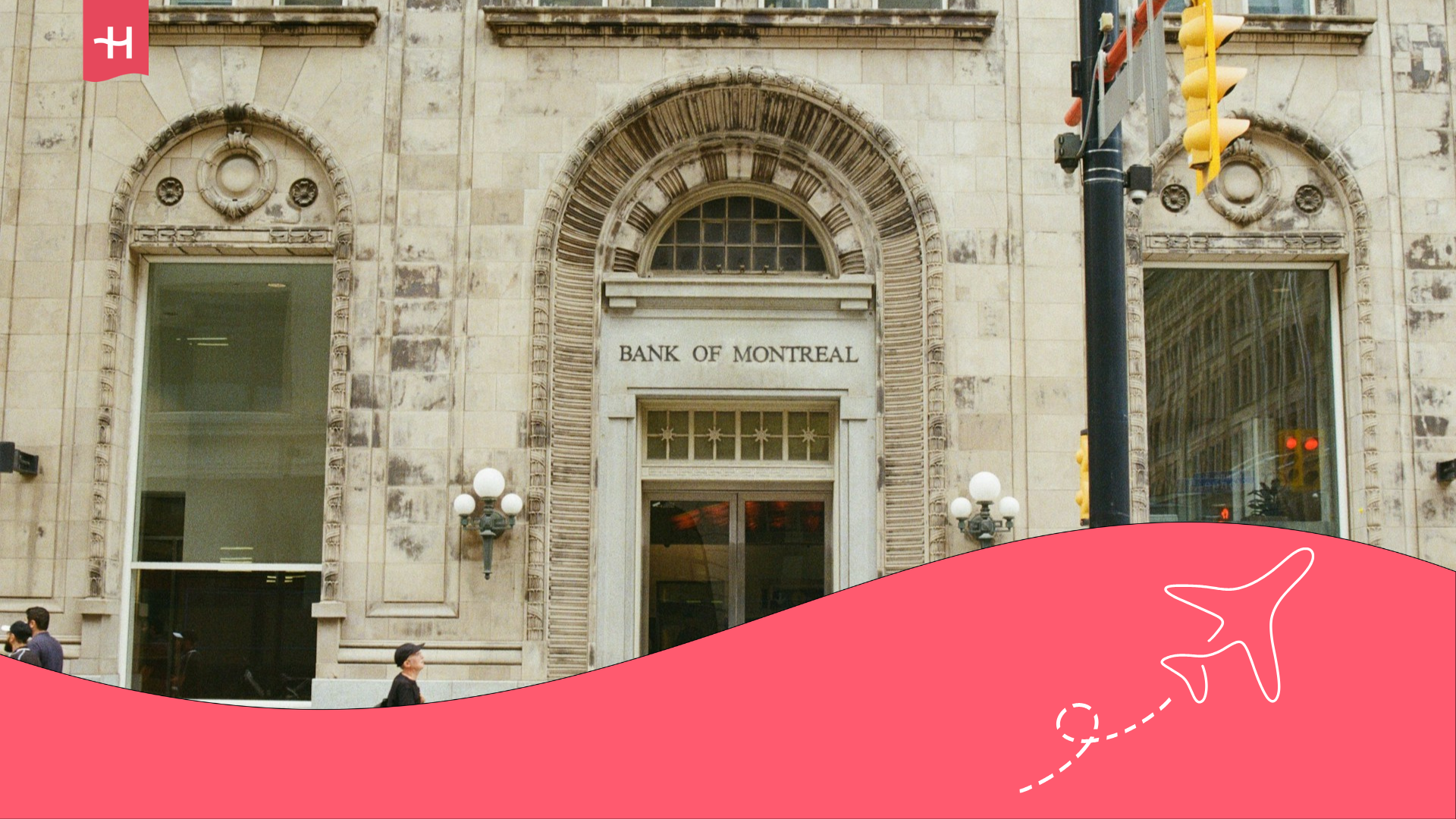Top banks in Italy for foreigners: All you need to know
Moving to Rome or another Italian city? Discover the best banks in Italy for foreigners. You will save money and speed up procedures.
Moving to a new place can quickly go from being an exciting adventure to a major headache. The thrill of starting fresh and exploring a new city comes with plenty of practical challenges that need to be sorted out. If you don’t plan ahead, things can get complicated once you arrive. One of the most important aspects to figure out is how you’ll manage your finances. That’s why today, we’re here to guide you through the process in Italy and help you find the best banks for foreigners.
Picking a bank that fits your needs as a foreigner can help you avoid unnecessary fees on transfers and withdrawals while making it easier to settle into the financial system of your new home. To make the process smoother, we’ll walk you through the different types of banks in Italy, what they offer, and how to open an account. That way, you can skip the hassle of bank hunting and spend more time enjoying la dolce vita.
Why open a bank account in Italy?
Italy may offer the charm of la dolce vita and a slower pace of life, but moving there still comes with its fair share of practical tasks. Like any big move, there are things you’ll need to sort out to avoid unnecessary headaches—one of the most important being how you manage your money. A local bank account will make things much simpler.
Why is it worth it? For starters, it helps you avoid those dreaded international fees. Every time you use your foreign card or withdraw cash, those small charges can quickly add up. On top of that, having a local bank account makes it much easier to handle essentials like paying rent, utility bills, and any taxes you might need to take care of as a resident in Italy.
Having a local bank account is also essential if you plan to work, start a business, or invest in property in Italy—in many cases, it’s practically a requirement. Employers and landlords often ask for an Italian IBAN to process payments or transfers. Plus, Italian banks offer exclusive financial products for residents, such as mortgages, loans, and savings options—none of which you’ll be able to access with a foreign account.
Requirements to open a bank account in Italy
Opening a bank account in Italy is not just a smart choice—it’s almost essential. But what do you actually need to get started? Can anyone open one, or do you need to establish residency first? It’s normal to have these questions. The good news is that the process is fairly straightforward, as long as you know what documents are required and choose the right bank. While the exact requirements may vary slightly from one bank to another, most follow a similar process. To avoid any issues, make sure you have all your paperwork ready before applying.

- Valid identity document: If you’re coming from outside the European Union, you’ll definitely need to present your passport. However, if you’re an EU citizen, you can use your national ID card to verify your identity instead.
- Fiscal code (Codice Fiscale): This tax identification number is essential for any paperwork in Italy, including opening a bank account. You can get it through the Italian Revenue Agency or arrange it at your consulate before starting the process.
- Proof of address: You’ll need proof of your address in Italy. This could be your rental contract, a utility bill in your name (such as for electricity or water), or a letter from your employer.
- Proof of income or economic activity: While it’s not always required, many banks will ask you to prove your financial stability. This can typically be done by providing a work contract, recent pay slips, or documents showing that you’re self-employed.
- Initial deposit: Most bank accounts require an initial deposit to get started. This usually ranges from 100 to 500 euros ($108 to $540), depending on the bank and the account type.
- Other specific requirements: Some banks, particularly local ones, might request proof of residence or extra documents if you’re opening an account as a resident. Here’s a tip: before heading to the bank, take a look at their website to check the exact requirements and bring copies of all the necessary paperwork.
If you choose a neobank or digital bank, such as N26 or Revolut, the requirements are usually more flexible. A passport and a valid address will be enough in many cases.
Types of banks with services for foreigners in Italy
Now that you understand how useful having a bank account in Italy can be and what documents you’ll need to open one, let’s dive into the different types of banks. Just like in other countries, Italy has a variety of banks, each offering different services and tailored to the needs of digital nomads, expats, students, and entrepreneurs. Let’s explore these options to help you find the best bank for your needs in Italy.

Neobanks or digital banks
Neobanks have changed the way we handle money in Italy and globally. Operating entirely online, they skip the physical branches, offering a simpler and more efficient experience. If you’re all about convenience and want to skip the paperwork, this is the ideal choice for you. With just your phone and your Holafly eSIM, you can open an account and manage your finances instantly.
Neobanks are great for foreigners because they simplify processes that can be tricky with traditional banks. Plus, many of their apps are available in multiple languages.
What characterizes neobanks?
- 100% digital opening: No need to go to a branch. Everything is done from the app, in minutes.
- Low or non-existent fees: Usually do not charge maintenance fees or hidden fees for international transfers.
- Advanced financial management: Tools such as alerts, expense categorization and real-time analysis help you make more conscious decisions.
- International flexibility: Many accounts allow you to handle multiple currencies and make currency exchanges at competitive rates.
Examples of neobanks in Italy:
- N26: Popular with expats, it offers a fully digital experience, inexpensive transfers and a simple interface in multiple languages.
- Revolut: Ideal for those who need to manage multiple currencies and make international transfers at very competitive rates.
- Wise: It’s known for its low fees on international transfers and its ability to handle multiple currencies—an excellent choice for anyone who deals with different currencies.
Local banks in Italy
Local banks, or “banche tradizionali,” are a solid choice for foreigners seeking stability and in-person access to financial services in Italy. These banks have a wide network of branches and ATMs across the country. If you prefer personal service and value having someone to guide you face-to-face, this could be the option that suits you best.
Local banks have the advantage of understanding the specifics of the Italian market. They typically offer products aimed at both residents and foreigners, including basic accounts, personal loans, and savings options.
What characterizes local banks in Italy?
- Close and personalized service: Each branch is staffed with advisors who can help you with questions and procedures clearly and directly.
- Wide network of branches and ATMs: Allowing you to access your money easily or manage transactions anywhere in the country.
- Variety of financial products: Basic checking accounts to more advanced options such as credit cards, loans and investment funds.
Examples of local banks in Italy:
- UniCredit: Notable for its services tailored to expats and its wide coverage in the country.
- Intesa Sanpaolo: Renowned for its technological innovations and targeted attention to students and foreign workers.
- BPM Bank: Perfect for those looking for a close relationship and personalized solutions for day-to-day life.
International banks in Italy
International banks operating in Italy are ideal for those who need to manage finances in multiple countries or want access to global financial services. They provide advanced features such as multi-currency accounts, quick international transfers, and specialized wealth management support.
If you work across different countries or frequently deal with foreign currencies, an international bank can simplify your financial tasks. Additionally, these banks typically have multilingual staff, making it easier to communicate and navigate their services.
What characterizes international banks in Italy?
- Multi-currency accounts: Tailored for those who need to operate in different currencies in a simple and economical way.
- Global coverage: Allows you to make international transactions and manage assets in several countries with a single account.
- Specialized advice: Experts in international finance are available to help you make strategic decisions, whether you are an entrepreneur or managing personal investments.
Examples of international banks in Italy:
- HSBC: A popular choice among expats looking for tailor-made financial solutions in a global environment.
- BNP Paribas: It combines European expertise with high quality services, tailored to international clients.
- Deutsche Bank: Flexible financial products, perfect for those who require advanced asset management.
Cooperative banks
Cooperative banks, or “Banche di Credito Cooperativo” (BCC) and “Casse Rurali” in Italy, are community-focused institutions owned by their members. They operate with the goal of supporting local economic and social growth, offering financial services that cater to the specific needs of their members and the surrounding communities.
Characteristics of cooperative banks:
- Shared ownership: Customers are usually partners and owners of the bank. Involved in decision making and benefit from profits.
- Local focus: Operating in specific communities. This enables them to better understand local needs and provide customized solutions.
- Personalized services: They offer financial products designed to meet the needs of individuals and small businesses, such as checking accounts, loans, and investment services.
Examples of cooperative banks in Italy:
- Banca di Credito Cooperativo di Roma: Strongly present in the Lazio region, offering a wide range of financial services to individuals and local businesses.
- Banca Popolare di Sondrio: Although operating as a joint stock company, it maintains a cooperative structure and offers services in several regions of Italy.
Important: If you are a frequent traveler and want to stay connected without worrying about expensive roaming or looking for a new SIM at every destination, Holafly’s subscription plans are for you. With a single eSIM, enjoy internet in more than 170 countries for a fixed price and no surprises on your bill. travel without limits and connect easily and securely! 🚀🌍

Top 5 banks in Italy for foreigners
There are over 439 banks operating in Italy, both traditional and digital. While it’s great to have options, it can make choosing the right one quite challenging. To narrow it down, we’ve put together a list of the top five banks in Italy for foreigners. We’ve based our selection on the experiences of other expats who have been in the same situation, as well as the reputation of the institutions.

Intesa Sanpaolo: Tailored for long-term residents and expats
If you’re looking for a bank in Italy that offers a mix of modern technology, personal service, and a broad network of branches, Intesa Sanpaolo might be the right choice for you. This major Italian bank is known for its ability to meet the needs of foreigners, providing everything from straightforward accounts to more advanced services for those wanting to fully immerse themselves in the country’s financial system.
With more than 3,700 branches and 7,000 ATMs, managing your finances will be a breeze. Their offices are open Monday to Friday, from 8:30 AM to 1:00 PM and 2:30 PM to 4:30 PM. Plus, they offer online customer support in several languages, which is great if you’re still getting the hang of Italian.
Intesa Sanpaolo accounts for foreigners
XME Conto
- Features: Modular account that adapts to your needs. You can add services such as debit or credit cards or access to savings plans.
- Rates: Free of charge for the first six months. After that, 6 euros per month ($6.50), with discounts if you direct debit your income.
- Opening requirements: ID document (passport or ID card) and proof of residence (rental contract or utility bill).
Conto Giovani
- Features: Designed for young people under 30. It includes advantages such as cards with no issuing costs and reduced commissions on transfers.
- Rates: Free for basic transactions.
- Opening requirements: Valid identity document and, if you are a student, a letter of academic enrollment.
| Advantages | Disadvantages |
| Extensive network of ATMs and branches | Monthly commissions after the first six months |
| Accessible hours and multilingual service | Some services require face-to-face transactions |
| Advanced functions in the mobile app | Limited benefits for non-resident accounts |
Unicredit: Versatile option for expats and international students
If you’re looking for a bank that combines innovation, easy-to-use services, and a wide network, Unicredit could be the perfect choice. It offers solutions for a variety of customer needs, while also prioritizing digital banking and in-person support. With over 2,200 branches and 8,400 ATMs throughout Italy, you’ll have plenty of options to manage your finances wherever you go.
Their branches are open Monday to Friday, from 8:30 AM to 1:30 PM and 2:30 PM to 4:30 PM. English support is available at many locations. Their mobile app is one of the top-rated in Italy, letting you make international transfers, payments, and track your transactions in real-time.
Unicredit accounts for foreigners
My Genius Account
- Features: A customizable account with different service levels based on your needs. It includes debit cards, free SEPA transfers, and full access to online and mobile banking.
- Rates: Free for basic version; advanced options from 4 euros per month ($4.30).
- Opening requirements: Valid identity document and proof of residence or link to Italy (e.g. rental contract, coliving or academic registration).
International student account
- Features: Intended for young people and students. Offers low fees and basic financial management tools such as budgeting and expense alerts.
- Rates: Free for most of the basic services.
- Opening requirements: Valid ID and proof of studies at an Italian institution.
| Advantages | Disadvantages |
| Extensive coverage with thousands of ATMs | Additional fees for some advanced services |
| Advanced and easy to use mobile app | Some transactions must be carried out in branches |
| Customer service available in English | Limited specific benefits for non-residents |
N26: Ideal for frequent travelers and digital nomads
N26 has changed the banking game with its digital approach, allowing you to open an account from anywhere. It’s especially popular among expats in Italy who want quick, straightforward financial management with minimal fees. Although it doesn’t have physical branches or ATMs, you can handle all your banking through its mobile app, available in multiple languages, including English.
With an N26 account, you’ll benefit from low-cost international transfers through its integration with Wise, along with budget management tools and real-time alerts for your transactions.
N26 accounts for foreigners
Standard Account
- Features: Basic account with no fees for transactions in euros. Includes a virtual debit card and full access to the app.
- Rates: Free for SEPA transfers and payments in euros.
- Opening requirements: You only need a valid ID and an address in Europe.
N26 Smart
- Features: Advanced features such as subaccounts, spending categorization and a physical card.
- Rates: 4.90 euros per month ($5.20).
- Opening requirements: Same as Standard Account.
| Advantages | Disadvantages |
| Fast opening and 100% online | No network of own ATMs |
| Low commissions on international transfers | Customer service limited to digital channels |
| Intuitive app with financial management tools | Does not include services such as personal loans or local savings accounts |
BPM Bank: Perfect for permanent residents and businesses
Banco BPM is a well-liked option for expats who prioritize stability and a wide range of services. It offers personalized support alongside a large network of 1,700 branches and 2,100 ATMs throughout Italy. Whether you’re looking for basic accounts or more complex financial products like mortgages and business loans, they provide solutions to meet your needs.
Office hours are generally from 8:30 AM to 1:30 PM and from 2:30 PM to 4:30 PM, with in-person support in English in many of its branches.
BPM Bank Accounts for foreigners
Conto Base BPM
- Features: Basic checking account with essential transactions such as transfers and debit cards. Includes access to online and mobile banking.
- Rates: 6 euros per month ($6.50).
- Opening requirements: Valid passport and proof of residence in Italy.
Professional Account
- Features: Intended for freelancers and small businesses. It offers financial management tools, access to financing and corporate cards.
- Rates: Varies according to the services contracted, starting at 10 euros per month ($10.80).
- Opening requirements: Valid ID, company registration and proof of business activity.
| Advantages | Disadvantages |
| Extensive network of branches and ATMs | Higher monthly fees on advanced accounts |
| Personalized service in English | Less digitalization than neobanks |
| Specific options for companies and self-employed | Some procedures require a face-to-face visit |
ING: Perfect for those seeking transparency and savings
ING is well-established in Italy and is known for its digital banking approach and commitment to transparency. It’s a great option for expats who prefer fee-free accounts and easy-to-use financial tools. Combining the simplicity of a neobank with the security of a traditional bank, it’s perfect for anyone who wants to manage their finances with minimal fuss.
While ING is primarily focused on digital banking, it also has physical branches called “Punti Arancio” in major Italian cities. If needed, you can visit these locations for personalized assistance with your banking needs.
ING accounts for foreigners
Conto Corrente Arancio
- Features: Checking account with no maintenance fees, with the option of associating a free debit card and access to online financial management tools.
- Rates: Free of charge for SEPA transfers and basic operations; 2 euros per month ($2.20) for cash withdrawals at non-associated international ATMs.
- Opening requirements: Valid ID and an Italian telephone number.
Conto Arancio Ahorro
- Features: Savings account with competitive interest rates for those who want to grow their money without risk. Includes automatic transfers from the current account.
- Rates: Free for deposits and fund management.
- Opening requirements: Previously registered with a current account at ING.
| Advantages | Disadvantages |
| No maintenance fees on basic accounts | Limited in-person service at Punti Arancio |
| Advanced and easy-to-use digital tools | Italian phone number may be required |
| Competitive interest savings options | Limits on free cash withdrawals |
Which is the best bank for foreigners in Italy?
After reviewing the offerings of each bank, it’s evident that Italy has banking options suited to various types of expats. To make it easier for you to compare, we’ve put together a table highlighting the key features of the best banks for foreigners in Italy. This will help you make a more informed choice.
| Bank | Best for | Monthly rates | Key requirements | ATM/branch network | Key advantages |
| Intesa Sanpaolo | Expats and long-term residents | From 6 euros ($6.50) | Passport and proof of residence | 3,700 branches and 7,000 ATMs | Multilingual customer service, extensive network, intuitive app |
| UniCredit | Students and frequent travelers | From 0 euros in basic accounts | Identity card and proof of residence | 2,500 branches and more than 8,000 ATMs | No commissions on basic accounts, multi-currency services |
| N26 | Digital nomads and temporary expats | From 0 euros | Passport and address in Italy | No proprietary network, 100% digital | Fast opening, multi-currency management, advanced app |
| ING | Savers and digital account seekers | From 0 euros | Italian identity card and telephone number | Physical locations in major cities | No maintenance fees, savings options |
| BPM | Foreign companies and business owners | From 5 euros ($5.40) | Identity card and proof of income | More than 2,000 branches and ATMs | Specialized services for businesses, multi-currency options |
Choosing the right bank can be tricky—it all comes down to your personal needs and situation. If you’re looking for something straightforward, modern, and expat-friendly, N26 is a great choice. Its fully digital approach makes account setup easy and hassle-free, and the app is intuitive, perfect for digital nomads or those on the move. On the other hand, if you prefer face-to-face service and a larger ATM network, Intesa Sanpaolo or UniCredit would be better options.
Steps to open a bank account in Italy
Now that you’re familiar with the best banks for foreigners in Italy and are closer to choosing one, you’re probably wondering: how do I open an account? While the process may vary depending on the bank you choose, it’s actually simpler than it seems if you know the steps to follow.
Gather the necessary documentation
Make sure you have all the required documents ready for the bank. As mentioned, most banks will ask for:
- A valid identity document, such as your passport.
- Your Codice Fiscale, which is your Italian tax number. You can get it from the Italian Tax Agency (Agenzia delle Entrate).
- Proof of domicile in Italy, such as a rental contract or a utility bill.
Decide whether to open your account in person or online
- In branches: If you choose a traditional bank like Intesa Sanpaolo or UniCredit, you’ll need to visit a branch during their business hours, typically Monday to Friday, from 8:30 AM to 4:30 PM.
- Digitally: If you choose a digital bank like N26 or Revolut, you can handle the whole process online, right from your phone. This covers everything from registration to verifying your details and activating your account.
Complete the application form
Whether online or in person, you’ll need to fill out a form with your personal details and choose the type of account you want to open (checking, savings, or multi-currency).
Make an initial deposit (if applicable)
Some banks require a minimum deposit to activate your account. For example, UniCredit asks for a deposit of 10 euros ($10.80) for standard accounts.
Set up your banking services
Once your account is active, request the additional services you need:
- Debit or credit cards.
- Access to online and mobile banking.
- Direct debit for bills or rent.
Confirm your account activation
After completing the process, double-check that your account is up and running. If you opened it online, you’ll get a confirmation email with your access details.
Frequently asked questions about banks in Italy for foreigners
For affordable and fast international transfers, N26 and Revolut are your best bet. They integrate platforms like Wise, which help you send money abroad with lower fees and competitive exchange rates.
The Codice Fiscale is Italy’s tax ID number, which you’ll need for any official processes, including opening a bank account. You can get it from the Italian Revenue Agency by showing your passport and a local address in Italy.
Yes, some banks offer accounts for non-residents. For example, N26 allows you to open digital accounts from abroad. However, for traditional banks like Intesa Sanpaolo or UniCredit, you’ll probably need an Italian address and a Codice Fiscale.
The processing time varies by bank and account type. Digital banks like N26 can have your account ready within minutes, while traditional banks typically take one to three business days, depending on the required paperwork.
Fees can differ based on the bank and the account type. Digital banks such as ING and N26 often offer accounts with no maintenance fees. In contrast, traditional banks like Intesa Sanpaolo or UniCredit typically charge a monthly fee of 5 to 10 euros ($5.40 and $10.80), though you can lower this by setting up direct deposits.
UniCredit and ING are ideal options for students. They provide accounts with low or no fees, advanced digital services, and exclusive benefits for those under 30, such as free cards and discounted rates on international transfers.





 Language
Language 


















 No results found
No results found







